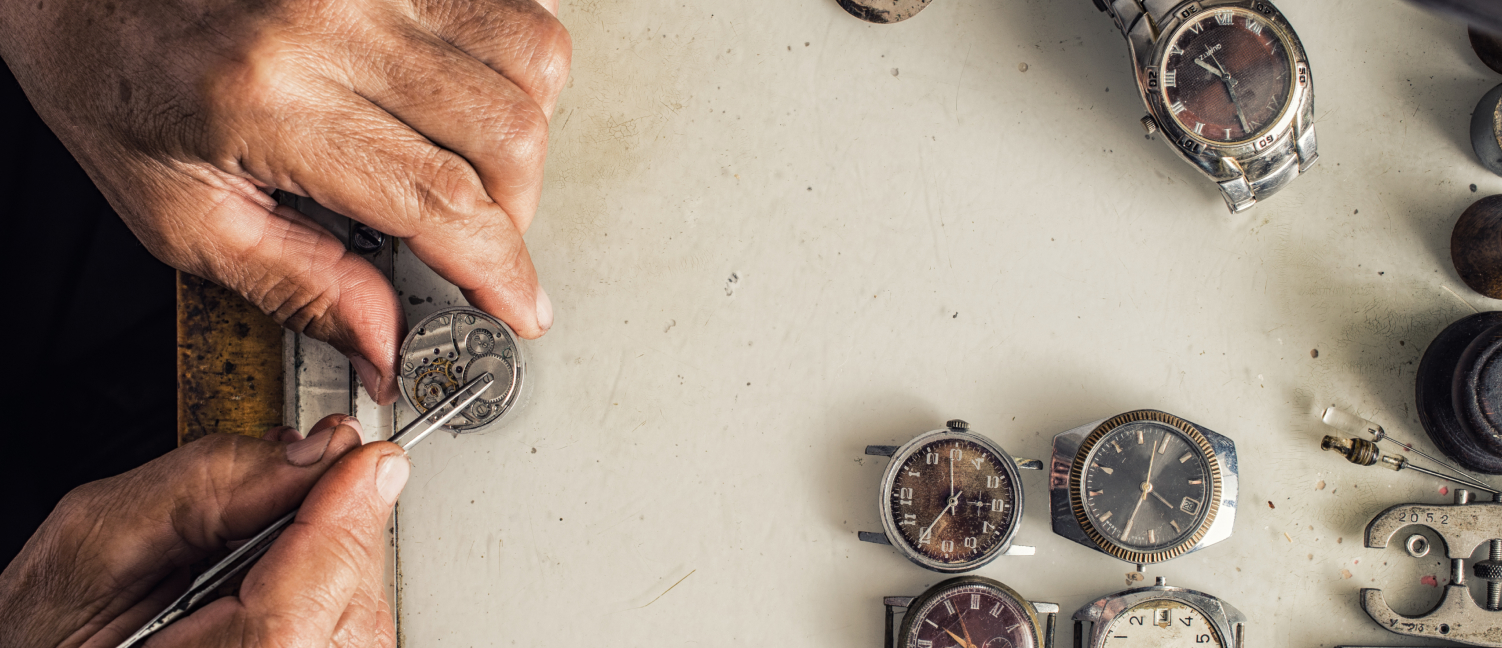Posted by Watch Warehouse on Mar 14, 2024
The Evolution of the Watch: From Pocket to Wrist
Luxury watches are a big deal today, not just for keeping time, but as a style statement and a symbol of status for many. But this wasn't always the case. Their rise to popularity is a story of necessity, starting during World War I. Back then, soldiers needed a way to check the time quickly and without using their hands, which wasn't possible with pocket watches. Enter the "trench watch," the early version of today's wristwatch, designed for the rough conditions of war. This need for practical timekeeping in tough situations is what kicked off the evolution from pocket to wristwatches, changing how we wear watches forever.

Before wristwatches took over, pocket watches were the main game in town. These weren’t just gadgets to tell time; they were a big deal in showing off status and craftsmanship. Back in the day, if you had a shiny, intricately designed pocket watch, it was clear you were someone important. These watches weren’t just about keeping time; they were prized possessions, often handed down through generations like precious family treasures.
However, things started changing with World War I. The need for practicality on the battlefield began shifting timekeeping from the pocket to the wrist. This shift wasn't just about fashion; it was a practical move that marked a significant change in how we view and use watches today. The transition from pocket to wristwatches was a sign of the times, literally and figuratively, paving the way for the wristwatches we rely on today.
World War I was a game-changer in many aspects, including how people told time. Soldiers on the front lines faced numerous challenges, with the need for efficient timekeeping becoming a critical logistical issue. In the chaos of battle, digging around for a pocket watch was more than just inconvenient—it could be downright dangerous. Coordinating attacks, following timed orders, and simply managing daily routines required a quick and accessible way to check the time.
Enter the concept of "trench watches." This was a practical solution to a pressing problem. Trench watches were essentially early wristwatches, designed to be worn on the wrist for easy access. They featured luminous hands for visibility in low light conditions and a more robust construction to withstand the harsh realities of life in the trenches. Some even came with protective grills over the face to prevent damage.
This shift wasn't just about convenience; it was a necessary adaptation to the demands of modern warfare. Trench watches symbolized a significant departure from the traditional pocket watch, offering soldiers a hands-free option to manage their time efficiently under the pressures of war. This innovation marked the beginning of the end for the pocket watch's dominance in personal timekeeping, setting the stage for the wristwatch to become the new standard in the post-war world.
The journey from trench watches to today's wristwatches is pretty fascinating. Originally, wristwatches were just pocket watches tweaked so soldiers could wear them on their wrists during World War I. This hands-free approach was super practical for combat. They even added features like glow-in-the-dark hands and protective covers to make these watches tough enough for the trenches.
After the war, everyone saw how convenient wristwatches were, and they started to catch on back home. Watchmakers got creative, rolling out improvements and new designs that looked good and were packed with features like being waterproof or self-winding. The designs got sleeker and more varied, moving away from the bulky, purely functional look of trench watches to styles that could match any outfit or occasion.
As time went on, wristwatches became a staple accessory. The 20th century brought us even more innovation, like the quartz movement, which made watches more accurate and affordable. Fast forward to today, and we've got everything from classic designs to smartwatches that do a whole lot more than tell time.
After World War I, the public's view of wristwatches took a dramatic turn. Initially seen as a military necessity, wristwatches quickly became a symbol of modern efficiency and style. This shift was partly due to returning soldiers who continued wearing their wristwatches, introducing them into civilian life. As people saw the practicality of having the time readily available on their wrist, wristwatches began to replace pocket watches as the preferred choice for timekeeping.
The adoption of wristwatches wasn't limited to any single sector of society; it spread across all classes and professions. Workers appreciated the convenience of not having to stop and fish out a watch from their pocket, while the elite saw new, luxurious wrist watch designs as a fresh way to signify status and fashion sense. By the 1920s and 1930s, watchmakers were producing wristwatches in a variety of styles, from the ornate to the minimalist, making them not just a tool for telling time but also a key accessory for personal expression.
Wristwatches became a fashion statement, with designs evolving to match the changing tastes and trends of the times. From elegant, jewel-encrusted pieces to the sleek, geometric lines inspired by the Art Deco movement, wristwatches were seen as a reflection of one's personal style and sophistication. The development of different watch movements, like the precise chronometer, made them even more desirable.
Moreover, wristwatches symbolized modernity. In an era marked by rapid technological advancements and an ever-quickening pace of life, they represented the modern person's need for precision and efficiency. The evolution of wristwatch technology, including the introduction of electric and quartz watches, further cemented their status as icons of the modern age.
Today, wristwatches are more than just timekeepers; they're an integral part of fashion, a symbol of technological achievement, and a reflection of individual style. Their journey from the trenches to the wrists of people from all walks of life highlights not just a change in how we tell time, but also in how we view ourselves and our place in a rapidly changing world.
